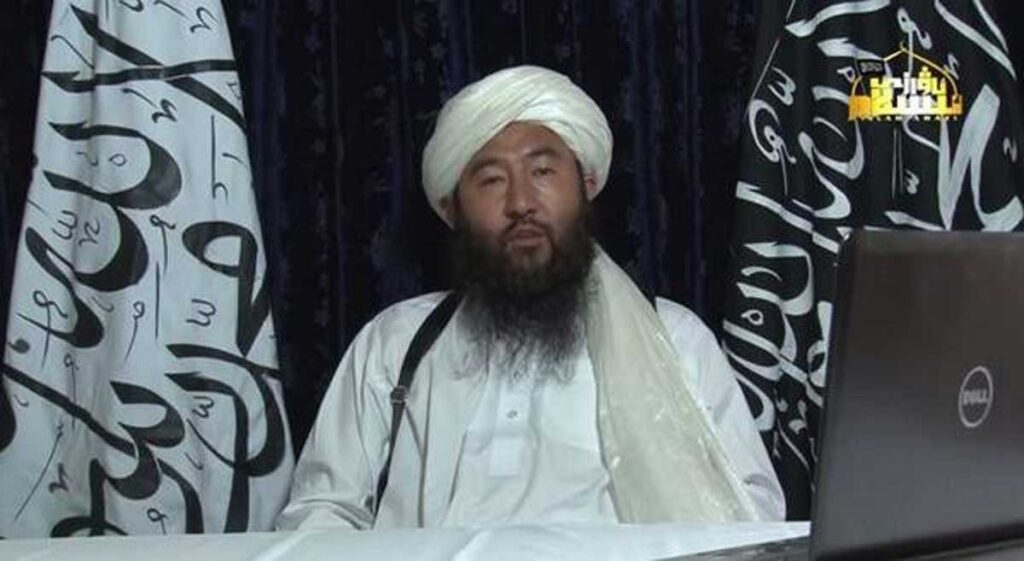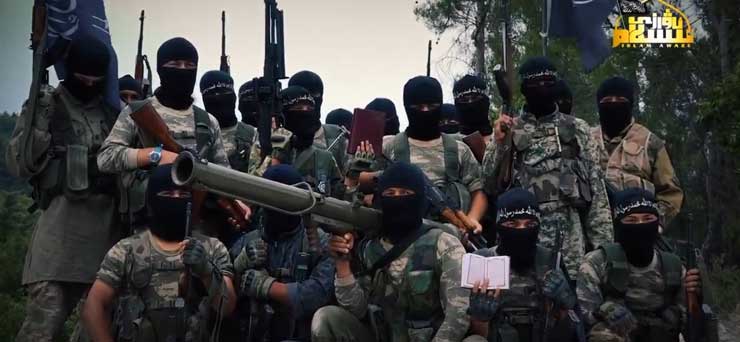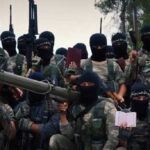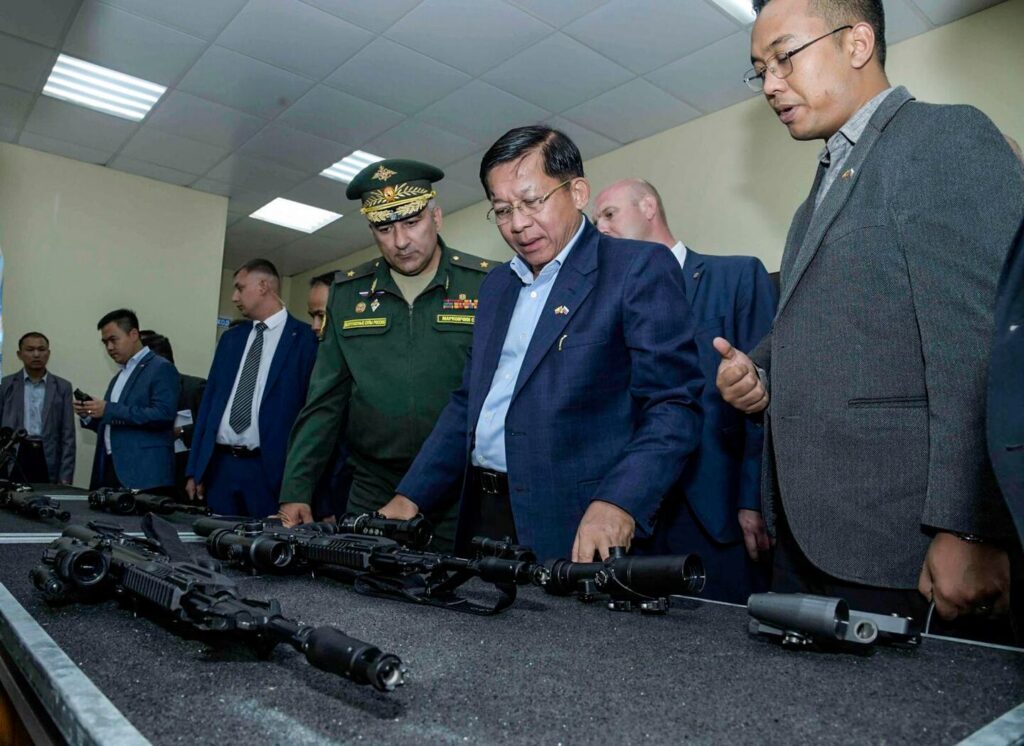MANTRAYA ANALYSIS # 86: 25 MARCH 2025
BIBHU PRASAD ROUTRAY & SHANTHIE MARIET D’SOUZA
Abstract
Suppressed at home by a vengeful policy of China, East Turkestan Islamic Movement (ETIM), the Uyghur separatist organization, is still a source of major anxiety for Beijing. Years after being courted with a warm embrace by the Taliban and al Qaeda, the group has become a liability for the Taliban in Afghanistan, for whom Chinese assistance is critical. Pressured to keep its anti-Chinese agenda under check, ETIM has the option of pursuing an unrestrained global agenda by remaining part of al Qaeda or aligning with the Islamic State. To navigate whichever path is chosen will require considerable skill and a strategy of multi-alignment with these transnational terrorist groups.
Pakistan-China Alliance Against the Uyghurs
On 2 October 2003, a Pakistani security force operation, targeting an al Qaeda hideout in mud-walled tribal homes in South Waziristan’s Angoor Adda, killed eight people. Among them was 39-year-old Hasan Mahsum, founder of the Uyghur militant group, the East Turkestan Islamic Movement (ETIM), also known as the Turkestan Islamic Party (TIP).[1] Angoor Adda is barely five kilometres from the Afghanistan border. Only a week before, Beijing had placed Mahsum on the top of its first-ever list of 11 Uyghur terrorists. He was accused of plotting to bomb a building in Kashgar (Xinjiang, China) on 17 June 1996 and had fled to Pakistan using a fake passport. The Chinese official version alleges “Mahsum stayed in Pakistan with the people of Xinjiang before being introduced to Osama Bin Laden. He decided to move to Afghanistan in 1997 where he remained in a terrorist training camp.”[2]
Founded in the mid-1990s in response to Chinese repression, ETIM seeks an independent homeland for the Uyghurs, a Muslim Turkic minority group from China.[3] Mahsum’s shift to Afghanistan developed the group’s linkages with AQ and the Taliban. Under the Taliban regime, ETIM, like a variety of other terror formations, flourished. With the collapse of the Taliban regime in 2001, all these groups moved into South Waziristan, maintaining their fraternal ties with AQ. Beijing alleges that ETIM has received “several million dollars” from AQ; and 2002, the US, as well as the United Nations, designated it a “terrorist group.” The US move was in return for Beijing extending its support to the war on terror.

(Abdul Haq al Turkistani)
Following Mahsum’s death, ETIM leadership passed to the hands of Abdul Haq (a.k.a Abdul Haq al Turkistani and Maimaitiming Maimaiti), who remains, to date, the chief of the group. Before the 2001 U.S. invasion of Afghanistan, Haq was in charge and perhaps the main instructor of ETIM’s main training camp in the Tora Bora mountains. The camp provided rudimentary instruction on light arms to its new recruits, as related by several detainees held at Guantanamo Bay. After 2001, Haq helped reestablish ETIM camps in Pakistan’s tribal agencies along the lawless border.
Under Haq’s guidance, ETIM has continued pursuing its resistance agenda. Carrying out attacks targeting Chinese nationals in Pakistan and elsewhere has supplemented the group’s low-level operations within China. In April 2004, for instance, three Chinese technicians were killed in Gwadar (Pakistan) and the suspicion fell on the ETIM. In response, Beijing’s Deputy Director of Public Security, Ma Mingyue, alleged that some ETIM terrorists from the Chinese province of Xinjiang were hiding in Lahore and Rawalpindi among the Chinese Uyghur community. This was unlikely, since both cities have a very small community of about 2,000 Uyghurs who have lived there for decades. A smaller number of Uyghurs who have fled Xinjiang in recent years live in Islamabad.
In July 2010, China repeated its charges, a day before the week-long China visit of then-Pakistan President Asif Ali Zardari. Zardari was expected to firm up the deal with China to finance and build two 650 mw nuclear reactors. State-run China Daily said an increasing number of ETIM militants were “fleeing to Pakistan and settling down there for future plots.”[4] It referred to the “close collaboration” between ETIM and Taliban, as well as AQ chief Osama bin Laden, and also to a “Chinese battalion” made up of about 320 ETIM members in the Taliban forces.
All of this lacked substantiation. Inflating the threat posed by Uyghurs as a community gives Beijing a useful pretext to crack down on them, with the present state of affairs an international scandal.[5] ETIM is Uyghur, but its relationship with the larger population of Xinjiang is by no means derivative.[6] Nonetheless, more than a million Uyghurs remain arbitrarily detained by Beijing in a process of violent forced assimilation[7] readily labelled by sources as “genocide.”[8]
Under Chinese pressure, Pakistan too started keeping a close watch on the Uyghur communities and subjecting them to severe regulations. Measures have included the military operations that led to the killing of Hasan Mahsum and also non-military harassment such as shutting down in 2006 a guest house in Rawalpindi that served the Uyghurs heading to Saudi Arabia for the annual Hajj pilgrimage. A school set up to teach Uyghur language to the kids in the community was shut down in 2010. In 2015, Pakistani police broke into another Uyghur language school in Islamabad and destroyed computers, textbooks, and other teaching material.[9]
This policy has continued to date. Uyghur nationals are regularly picked up, beaten, and threatened in order to safeguard China-Pakistan relations in general and the China-Pakistan Economic Corridor (CPEC) project in particular. The irony of Islamic Pakistan repressing Islamic Uyghurs, of course, is replete. Some Uyghurs have also been deported to China (a step recently engaged in by Thailand, which prompted US sanctions against the officials involved).[10]
Holy Alliance with Al Qaeda
Notwithstanding such measures, ETIM’s close links with AQ have persisted.[11] Before 2014, AQ may have helped ETIM organize violent attacks within China, such as the explosion set off in Urumqi (Xinjiang region) in 2005 that killed 140 people and left hundreds more wounded. More common, though, are low level actions against Chinese, who have increasingly pushed the Uyghurs to the margins of their homeland.[12] In March 2014, for instance, a mass knife attack in Kunming, south-west China, had killed 29 and left more than 130 injured. In response, Beijing launched its “strike first approach,”[13] which led to the arrest of eight ETIM members in April 2014. In May 2014, however, a bomb and knife attack at Urumqi’s south railway station killed three and injured 79. There followed widespread repression lacking focus and a basis in intelligence. Between 2014 and 2021, 14,000 persons claimed to be either members of ETIM or sympathizers were arrested. By 2017, the wholesale internment of a slice of the population began (an estimated 80 percent of China’s 11 million Uyghurs live in Xinjiang).[14]
Beijing claims that such measures have dismantled ETIM’s network and facilities within China significantly. A clear outcome of this is ETIM’s increasing reliance on global terrorist groups to survive and operate.
In 2005, according to the US Treasury Department, AQ awarded Haq a seat in its shura (advisory council). On occasions, he was even considered influential enough to mediate between rival Taliban factions in Pakistan.[15] In 2009, he was designated an AQ-affiliated terrorist by the Treasury for his involvement in fundraising, recruiting, propaganda efforts, and the planning and execution of terror attacks. The UN also added him to the AQ sanctions list.
He was thought to have been killed in a drone strike in Pakistan in 2010 but re-emerged in 2014 in an ETIM propaganda video. Fast forward to 2021. ETIM returned to Afghanistan after Taliban claimed power in Kabul in August. In May 2022, Haq celebrated Eid al Fitr and the Taliban’s victory in Afghanistan.[16] His continued presence in Afghanistan contradicts the Taliban’s claim that no foreign fighters operate or are based in the country.
Growing Footprints in Syria

(ETIM Cadres in Syria)
Further afield, ETIM has cooperated with AQ in Syria for decades. ETIM fighters moved into Syria immediately after the start of the Syrian uprising in early 2011 and joined forces with AQ’s Al Nusrah Front, which has since morphed into Hayat Tahrir al-Sham (HTS). According to a report of the United Nations Analytical Support and Sanctions Monitoring Team, released on 13 February 2025, Abdul Haq could have been in charge of directing the operations of hundreds of ETIM fighters who have moved into Syria. The report further notes that Syrian ETIM forces—estimated to be between a rather wide range of 800 to 3,000 combatants—are led by a commander known as Kaiwusair. The previous Monitoring Team report from July 2024 noted that Kaiwusair’s deputies, Zahid Qari and Shaykh Touba, were appointed by Haq in March 2024. ETIM receives financial support from HTS and additionally operates businesses in regional countries, including Türkiye to generate funds, the report noted.[17]
ETIM was among the many insurgent factions that participated in the stunning 11-day offensive that ousted Syrian President Bashar al-Assad in December 2024. ETIM members shared footage in which they addressed their grievances in Xinjiang to Syrian audiences and threatened to utilize against China the stockpiles of weapons seized from the former Syrian Arab Army. Abdul Haq issued a statement: “With the permission of God, his power and strength, the Chinese infidels will soon taste the same torment that the infidels in the Levant tasted.”[18]
The Chinese Embassy in the United States reacted by asserting, “China stands ready to step up counterterrorism cooperation with members of the international community to firmly strike down on ETIM and keep the region and the world safe and stable.”[19 In the first week of January 2025, the new Syrian government reportedly accorded senior ranks to the ETIM chief angering China further. Fu Cong, China’s permanent representative to the UN said that his country is “greatly concerned.”[20]
In Hands and Gloves with the Islamic State
ETIM’s deep relations with AQ theoretically preclude any links with the Islamic State. The on-ground reality, though, is something different. In fact, IS seems to have attracted a slice of ETIM cadres, making ETIM one of a number of groups interfacing with both AQ and the Islamic State.
In December 2014, Beijing advanced for the first time a narrative that some 300 Chinese extremists were fighting alongside the Islamic State group in Iraq and Syria. An article in the ultra-conservative Chinese outlet, Global Times, normally a reliable mouthpiece of Beijing official thought, said that ETIM members were travelling to Syria via Turkey to join Islamic State fighters.[21] The GT piece was a follow-up to the statement of Wu Sike, China’s envoy to the Middle East, who said about a hundred Chinese citizens, most of them from ETIM, were in the Middle East fighting or being trained. Though providing no evidence, China also criticized the Turkish government for offering shelter to Uyghur refugees who have fled China through Southeast Asia and claimed such a channel creates security risks.
The migration of Uyghurs into the fold of IS appears to have coincided with the 2014 statement of IS supremo, the late Abu Bakr al-Baghdadi, highlighting Chinese atrocities against Muslim Uyghurs. China was on his list of twenty countries and regions where “Muslims’ birthrights had been forcibly seized”. The Chinese authorities believed this was a bid to further radicalize the Uyghurs and send them back to China after training them in Syria and Iraq.
It was not long after, on 18 September 2015, that a group of knife-wielding suspects set upon security guards at the gate of a coal mine in Terek township in Aksu in Xinjiang before targeting the owner’s residence and a dormitory for workers. When police arrived at the mine to control the situation, the attackers rammed their vehicles using trucks loaded with coal. A total of 50 people, including police personnel, were killed in the attack and another 50 were injured. This attack never made it into the Chinese state media until the killing of 17 suspects from three families including women and children 56 days later.
“All terrorists were killed on the 56th day of a ‘pursue and attack’ operation” in the region, China’s Ministry of Public Security announced in a 14 November statement published on its website, referring to the action as a “great victory in the War on Terror.”[22] The same month, though, IS kidnapped and killed a Chinese national, Fan Junghui, alongside a Norwegian in an unspecified location. The actual motivation for the execution was never expressed by the outfit.
In late February 2017, Islamic State’s al-Furat Province (Western Iraq) released a video of Uyghur fighters in its ranks. In this video, they vowed to return to their homeland and “shed blood like rivers and avenge the oppressed” in attacks against Chinese targets. This was the group’s first direct threat toward China. Soon after, in June 2017, the Islamic State announced it had executed two Chinese teachers abducted in Pakistan’s southwestern Balochistan province.[23] In February 2019, the Islamic State’s periodical al-Naba devoted a sub-section, “Stop the Communists’ criminality,” urging jihadists to prepare for a long war with China by migrating to the nearest Islamic country or a “less evil” country.
This, however, was followed by a long lull, during which the Islamic State stopped mentioning China and its atrocities against Uyghur Muslims.[24] The calm was broken only after Taliban took over Afghanistan. On 8 October 2021, the Islamic State carried out a suicide attack on a Shiite mosque in Kunduz province, killing more than 70 people and injuring over 140 worshippers belonging to the Hazara minority community. The Islamic State’s Khorasan (ISK) claimed responsibility for the attack via an online propaganda statement and identified the bomber as “Muhammad al-Uyghuri,” a Uyghur.
The ISK’s new policy appears to exploit the disenchantment among the ETIM members who had been drawn to the Taliban as the only viable alternative then to pressure from Beijing. According to reports, the Taliban desire for the extension of the CPEC into Afghanistan was motivating it to force ETIM into a toning down of its anti-Chinese agenda and even relocation to Central Afghanistan from Badakhshan province that shares a small border with Xinjiang via the mountainous Wakhan Corridor.[25] Such action is understood to have given rise to some defections from AQ and Taliban-affiliated ETIM to the Islamic State. Numbers are unknown but appear sufficient to boost ISK’s ranks. A year later, ISK followed up with a coordinated attack on a Chinese-owned hotel in Kabul that left three assailants dead and at least two of the hotel guests injured as they tried to escape by jumping out from a window.[26]
Links with the Islamic State can potentially allow ETIM to expand further and be more aggressive in targeting Chinese targets, especially exposed nationals globally. The Islamic State, for example, has a strong presence in several African countries, and it is logical to consider ETIM movement there. A key IS technique of its consolidation process in Africa is to attract foreign (non-African) fighters to the region to serve as trainers to the local recruits and other activities. As per available intelligence, a small number of foreign fighters, especially from the Arab nations, have moved to the Sahel. Although the presence of any ETIM member in Africa is unconfirmed so far, it is likely to be a natural progression of the Islamic State’s expansion in the region.
The affiliation of ETIM with other terror groups in Africa is a natural process given the strong IS vector there. Potential lies with the Islamic State’s West Africa Province (IS-WA), which operates in the Lake Chad Basin areas of Nigeria, Niger, Cameroon, and Chad; IS Sahel Province (IS-Sahel), which operates in Mali, Niger, and Burkina Faso; Islamic State Democratic Republic of the Congo (ISDRC); Islamic State-Mozambique (IS-M); and Islamic State-Somalia based in the Puntland. Islamic State-Somalia hosts an Islamic State regional office, Al Karrar, which has acted as a financial hub for Islamic State elements around the world.
Longevity of Terrorism
ETIM thus has emerged as a classic example of a local group capable of small attacks metamorphosing into an affiliate of a global terror group by exploiting a range of enablers. What makes ETIM stand apart is its ability to maintain ties with both the AQ and the ISslamic State, giving it substantial operational potential within both groups. It may have been driven out from China with diminished capacity to orchestrate any major attack there, but it has grown more powerful nonetheless. It now can pose a serious threat to Chinese interests in other countries.
Alliance with AQ or the Islamic State isn’t the only factor that sustains the ETIM. Geopolitics plays a key role, as well. In 2020, the first Trump administration de-recognised it as a terror group, citing Chinese atrocities against the Uyghurs. That decision still stands despite Chinese remonstrances. On the other hand, Pakistan, which denounces Israel’s war in Gaza and points out to the human rights issues in Kashmir, not only maintains silence on the plight of Uyghurs but acts as an extension of the Chinese security arm to repress them.
ETIM has exposed the limitations of Beijing’s strong-arm tactics, a reality which has lessons for a large number of countries that rely on annihilation as the predominant tool to deal with what should be recognized as terrorism being used as a method in a larger political project. The fact that tactical terrorism evokes fear, hatred, and sympathy at the same time among different constituencies points to its political nature. A large number of separatist movements have been resolved through dialogue, negotiations and political outreach. Beijing may have gravely erred by pushing ETIM into the lap of the AQ and the Islamic State. Nevertheless, unless it takes stock of its errors and adopts a different strategy, ETIM will continue to pose a major threat with its transnational character and growing global footprints.
END NOTES
[1] “Pakistan kills Uighur independence fighter”, Al Jazeera, 23 December 2003, https://www.aljazeera.com/news/2003/12/23/pakistan-kills-uighur-independence-fighter.
[2] Huma Aamir Malik, “China Says Terrorists From Xinjiang Hiding in Pakistan”, Arab News, 30 May 2005, https://www.arabnews.com/node/250301.
[3] Discussion in Sean R. Roberts, The War on the Uyghurs: China’s Internal Campaign Against a Muslim Minority (Princeton, NJ: Princeton UP, 2020).
[4] “‘Chinese Islamic militants setting up bases in Pak’”, Indian Express, 5 July 2010, https://indianexpress.com/article/news-archive/print/chinese-islamic-militants-setting-up-bases-in-pak/.
[5] Cf. Human Rights Watch, “China: UN Should Act on Crimes Against Humanity,” 20 June 2024, https://www.hrw.org/news/2024/06/20/china-un-should-act-crimes-against-humanity.
[6] Superior treatment of the alleged terrorism of normal Uyghur life processes in Darren Byler, Terror Capitalism: Uyghur Dispossession and Masculinity in a Chinese City (Durham, NC: Duke UP, 2022); cf. Gulchehra Hoja, A Stone is Most Precious Where it Belongs: A Memoir of Uyghur Exile, Hope, and Survival (NY: Hachette Books, 2023).
[7] Timothy Grose, Negotiating Inseparability in China: The Xinjiang Class and the Dynamics of Uyghur Identity (Hong Kong: Hong Kong UP, 2019).
[8] E.g., Mamtimin Ala, Worse Than Death: Reflections on the Uyghur Genocide (Toronto: Hamilton Books, 2021); also, Nury Turkel, No Escape: The True Story of China’s Genocide of the Uyghurs (NY: Hanover Square Press, 2022), and Tahir Hamut Izgil, Waiting to be Arrested at Night: A Uyghur Poet’s Memoir of China’s Genocide, trans & intro Joshua L. Freeman (NY: Penguin Press, 2023).
[9] Brent E. Huffman, “Pakistan Is Cracking Down on Uyghur Muslims Who Fled China”, Pulitzer Center, 21 May 2021, https://pulitzercenter.org/stories/pakistan-cracking-down-uyghur-muslims-who-fled-china.
[10] Cf. Sebastian Stranglo, US Imposes Visa Restrictions on Thai Officials Over Uyghur Deportation,” The Diplomat, 17 March 2025, https://thediplomat.com/2025/03/us-imposes-visa-restrictions-on-thai-officials-over-uyghur-deportation/.
[11] For UN assessment, https://main.un.org/securitycouncil/en/sanctions/1267/aq_sanctions_list/summaries/entity/eastern-turkistan-islamic-movement
[12] Cf. Gardner Bovingdon, The Uyghurs: Strangers in Their Own Land (NY: Columbia UP, 2010).
[13] “Deadly China Blast at Xinjiang Railway Station”, BBC, 30 April 2014, https://www.bbc.com/news/world-asia-china-27225308.
[14] Recent discussion, Gulbahar Haitiwaji and Roenn Morgat, How I Survived a Chinese “Re-Education” Camp, trans. Edward Gauvin (NY: Seven Stories Press, 2024) ; also,
[15] Bill Roggio, “Turkistan Islamic Party leader directs Syrian fighters from Afghanistan”, Long War Journal, 14 February 2025, https://www.longwarjournal.org/archives/2025/02/turkistan-islamic-party-leader-directs-syrian-fighters-from-afghanistan.php.
[16] Bill Roggio, “Turkistan Islamic Party leader celebrates Eid in Afghanistan”, Long War Journal, 16 June 2022, https://www.longwarjournal.org/archives/2022/06/turkistan-islamic-party-leader-celebrates-eid-in-afghanistan.php.
[17] Considerable irony obtains, since “Turkey,” pursuant to its foreign policy designs, maintains liaison with a variety of violent radical Islamist groups, all the while focusing upon the various Kurdish groups – who themselves as critical to the fight against IS and have emerged from what may be considered an opposite trajectory to ETIM. That is, the Kurdish groups began as radical insurgents who made considerable use oif terrorism but steadily have become something quite different. Turkey, as with China, is the key factor in the continued radicalization process. Cf. Mashuq Kurt, “Radical Habitus: Trajectories of Youth Radicalization in Turkey,” Current Anthropology 64, no. 6 (December 2023), 692-710, https://www.journals.uchicago.edu/doi/epdf/10.1086/727896.
[18] “China Vows to ‘Strike Down’ Syria’s Victorious Uyghur Rebels Threatening Xi”, Newsweek, 14 December 2024, https://www.newsweek.com/china-urges-stability-syria-uyghur-rebels-1999575.
[19] Ibid.
[20] Minlu Zhang, “China voices concern over Syrian Army designation”, China Daily, 9 January 2025, https://global.chinadaily.com.cn/a/202501/09/WS677f414ba310f1265a1d9e20.html.
[21] “China: About 300 Citizens Fighting With IS in Iraq, Syria”, Voice of America, 15 December 2014, https://www.voanews.com/a/china-about-300-citizens-fighting-with-is-in-iraq-syria/2559164.html.
[22] “Chinese Authorities Kill 17 Suspects in Xinjiang Attack, Including Seven Women and Children”, Radio Free Asia, 17 November 2015, https://www.rfa.org/english/news/uyghur/suspects-11172015175006.html.
[23] Elliot Stewart, “The Islamic State stopped talking about China”, War on the Rocks, 19 January 2021, https://warontherocks.com/2021/01/the-islamic-state-stopped-talking-about-uighurs/.
[24] Ibid.
[25] “Taliban ‘Removing’ Uyghur Militants From Afghanistan’s Border With China”, Radio Free Europe Radio Liberty, 5 October 2021, https://www.rferl.org/a/taliban-uyghur-militants-afghan-china/31494094.html.
[26] “Islamic State group claims attack on Chinese hotel in Kabul”, Indian Express, 13 December 2022, https://indianexpress.com/article/world/islamic-state-kabul-chinese-hotel-attack-8322507/.
(Dr. Bibhu Prasad Routray is the Director of MISS. Dr. Shanthie Mariet D’Soza is the Founder & Executive Director of MISS. This analysis has been published as part of Mantraya’s ongoing “Fragility, Conflict and Peace Building”, Mapping Terror & Insurgent Networks”, and “Islamic State in South Asia” projects. All Mantraya publications are peer-reviewed.)




